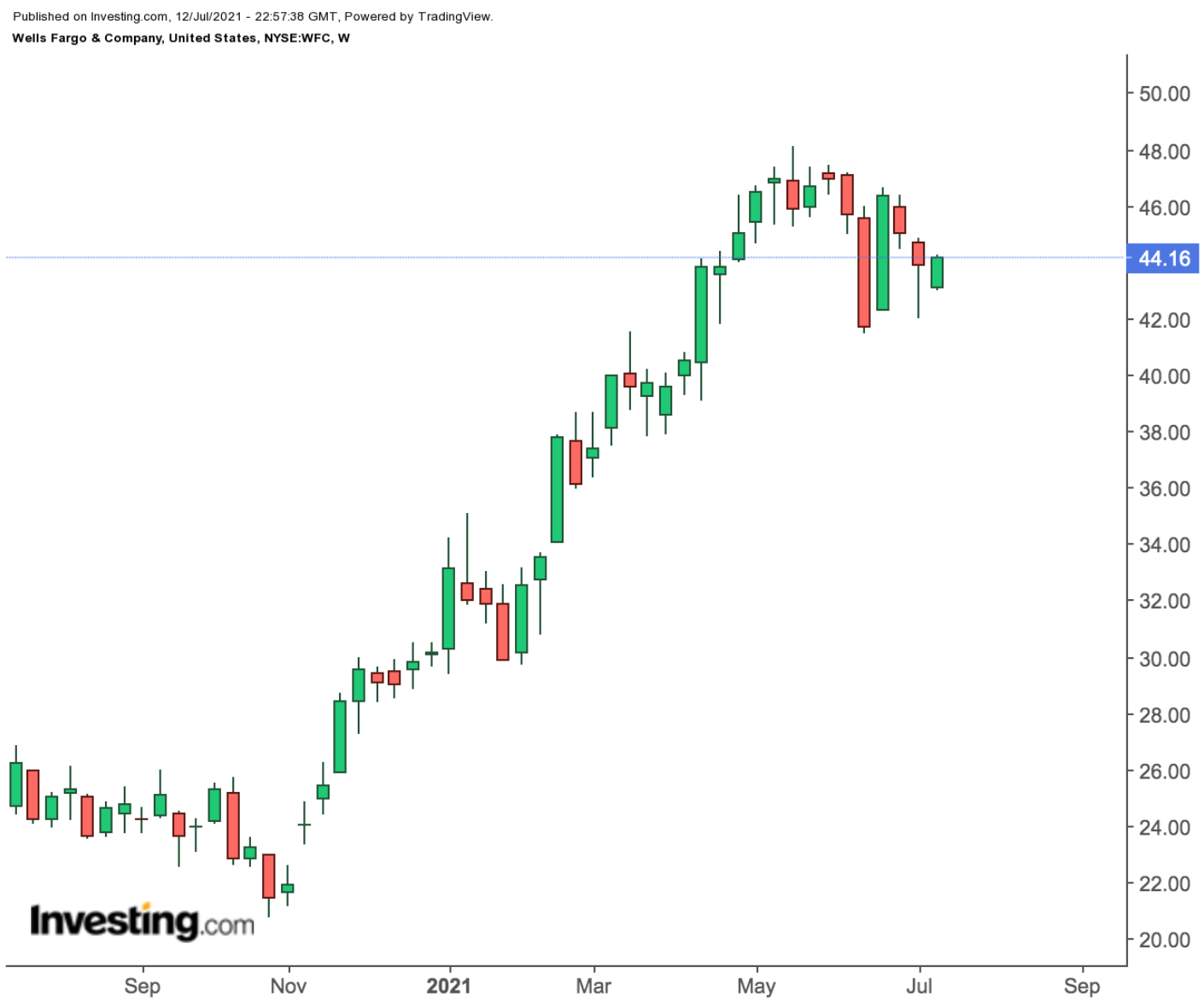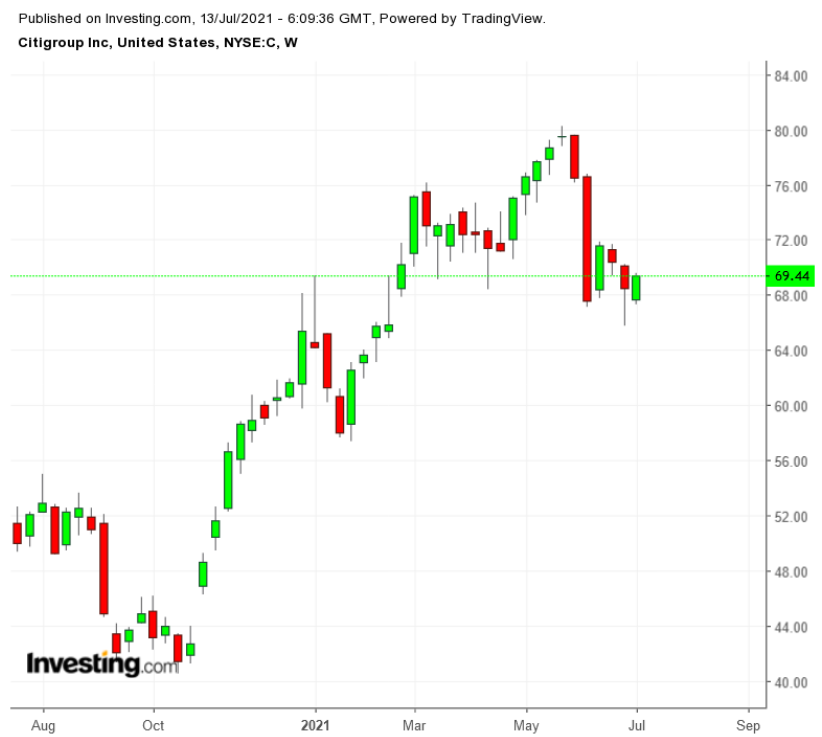With the largest U.S. banks reporting their second-quarter earnings this week as Q2 earnings season kicks off, investors don’t have much to complain about.
The KBW Bank Index is up more than 70% during the past year, double the gains delivered by the S&P 500 during the same period. This remarkable performance during one of the deepest recessions in U.S. history is a testament to their resilient business models, which were developed after the 2008 financial crisis.
This surprisingly robust performance, however, can’t go on forever with the pandemic-related earnings boost tapering off gradually as the economic reopening continues.
The big difference will be a substantial drop in the banks’ trading revenues, which are expected to show a 28% decline for the top U.S. investment banks according to analyst estimates when they begin reporting second quarter results starting today.
Citigroup (NYSE:C) and JPMorgan (NYSE:JPM) executives have warned ahead of their earnings that each of their trading revenues could be down 30% or more compared with a year ago. That could amount to a loss of about 10% of total revenue at each bank.
Loan growth, which has been weak during the pandemic as both consumers and businesses curbed their spending, has yet to pick up. Total loans for the commercial banks probably fell a combined 3% in the quarter, according to analysts’ estimates.
Favorable Economic Backdrop
Despite these weak spots, top banks still have areas of strength that could surprise investors this season. These lenders, for example, can release billions from the reserves they built during the pandemic to deal with the impact of soured loans.
Banks could report Q2-per-share profits that are 40% higher than the same period a year ago, according to analysts at Keefe, Bruyette & Woods, via a Wall Street Journal report. Another factor that could provide a boost to this week’s earnings is a record first half for mergers and acquisitions. Revenue from this business could see a 30% surge for the industry.
On a slightly longer horizon, the economic backdrop continues to be favorable for banks, in our view. Combined with the government’s massive infrastructure spending, and a gradual tapering off monetary stimulus, banks could see demand for credit pick up substantially next year as companies and individuals use up the liquidity accumulated during the pandemic.

Wells Fargo (NYSE:WFC) and Bank of America (NYSE:NYSE:BAC), which both reporting earnings Wednesday ahead of the open, are well-positioned to benefit from growth in loans and rising interest rates, two key themes likely to drive bank stocks over the next nine months.

Citi, on the other hand, which also reports on Wednesday before the bell, is a good bet to pay higher dividends going forward. It was the lone bank from the group of six top lenders last month that didn’t increase its dividend, keeping its quarterly payout unchanged at $0.51 for a 2.98% annual yield, but leaving the door open for a hike.

Five of the six largest banks have already lifted their dividends, collectively raising their per-share payouts 40% from levels they held steady or cut during the coronavirus-induced economic collapse. They also committed to buying tens of billions of dollars of their own stock after the Federal Reserve affirmed they are healthy enough to do so.
Bottom Line
Earnings from some of the nation’s largest banks could show that the pandemic-fuelled bump in their sales is already over. That said, the second phase of their earnings growth has yet to come. That should occur when they begin to benefit from loan growth and higher interest rates.
